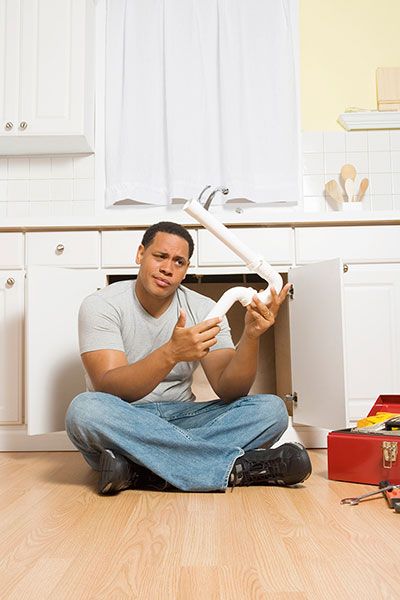 It is not recommended that every homeowner do their own plumbing repairs, but some are tempted to take matters into their own hands. In any situation, it’s always best to leave the larger and more difficult repairs to a professional.
It is not recommended that every homeowner do their own plumbing repairs, but some are tempted to take matters into their own hands. In any situation, it’s always best to leave the larger and more difficult repairs to a professional.
If you choose the “do-it-yourself” (DIY) way for minor repairs, make sure to proceed with caution, as it may end up causing you more stress and costing more money than anticipated in the long run. Plumbing can be tricky, and it’s smart to consult a professional before proceeding.
The Top Five Biggest DIY Plumbing Mistakes
- Attempting to make repairs the cheapest way possible.
- Lack of knowledge on “code” for plumbing. Local building codes are meant to protect the building’s occupants, and serious plumbing problems can result if they aren’t followed. Always make sure that you have the right permits.
- Using the wrong materials or the wrong parts for your plumbing can lead to unexpected problems for people who are unaware of how these materials or parts react.
- Not having the right tools for the job.
- Waiting too long to address a small problem, and it becomes much worse.
Is It Worth the Time and Money to Do It Yourself?
If you have some skill and knowledge of how things work, then it doesn’t hurt to give it a try. Just understand that a bad repair can cost more time and money in the future!
Other Than Calling a Plumber From the Very Beginning, What Can People Do to Avoid These Mistakes?
First, make sure you don’t take on a plumbing job that is more than you can handle. Check online tutorials to see what you need to do for your plumbing job. Do some research, pull up YouTube videos on the repair job, or call a professional for advice. If the repair seems like something beyond your capabilities, stop and call a professional.
Here Are Some Common Fixes That Homeowners May Be Able to Tackle on Their Own:
- Replacing a kitchen or bathroom sink faucet
- Putting a repair clamp on the waterline for a temporary fix
- Caulking around a shower or toilet
- Relighting a water heater
- Turning off the gas if there is a leak
- Repair of a toilet tank
The first step in most plumbing jobs should be shutting off the flow of water to the part that is in need of repair.
Some problems will require you to contact a plumber right away. Examples of this would be anything that is causing damage or is a safety concern; active water flow (where it doesn’t belong); and a sewer or gas leak.
